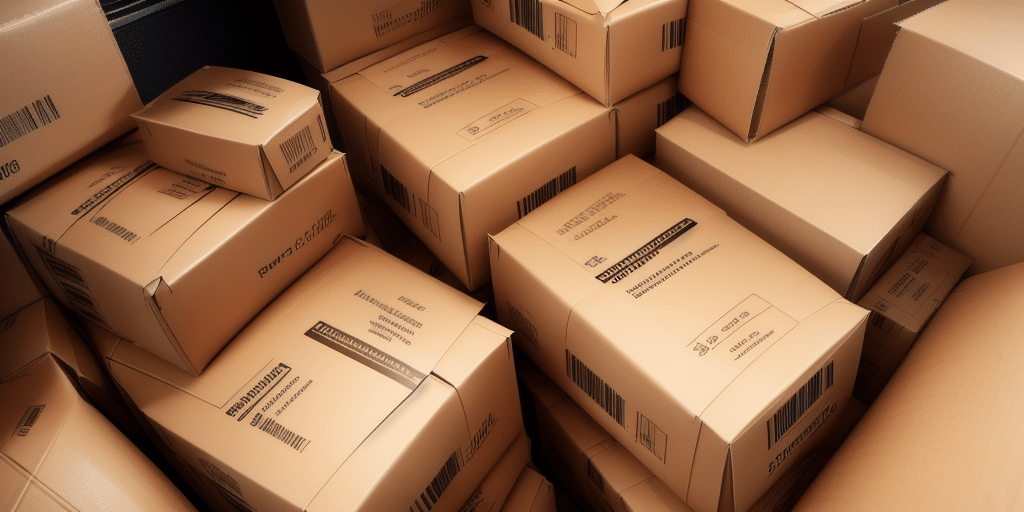Creating and Managing Pre-Order and Backorder Systems: A Step-by-Step Guide
In the competitive world of ecommerce, implementing effective pre-order and backorder systems can significantly enhance your business's ability to meet customer demand and manage inventory efficiently. This comprehensive guide will walk you through the essential steps and best practices for establishing these systems, ensuring both customer satisfaction and operational success.
Understanding Pre-Order and Backorder Systems
Before diving into the implementation process, it's crucial to grasp the fundamental differences between pre-order and backorder systems:
- Pre-Order System: Allows customers to purchase a product before its official release or availability. This system helps businesses gauge market interest and secure sales in advance.
- Backorder System: Enables customers to order products that are currently out of stock, with the assurance that their purchase will be fulfilled once inventory is replenished.
Both systems offer mutual benefits: customers secure desired products, and businesses optimize inventory levels and forecast demand more accurately.
Benefits of Implementing Pre-Order and Backorder Systems
Adopting these systems can provide several advantages for your ecommerce business:
- Demand Forecasting: Accurately predict product demand, reducing the risk of overstocking or stockouts.
- Cash Flow Management: Secure funds through pre-orders, which can be reinvested into production or inventory.
- Customer Engagement: Generate excitement and anticipation for new product launches.
- Inventory Optimization: Align stock levels with actual demand, minimizing storage costs and waste.
According to a Shopify study, businesses that effectively utilize pre-order systems can increase their sales by up to 30% during product launches.
Implementing a Pre-Order System
Step-by-Step Guide
- Select the Right Platform: Choose an ecommerce platform that supports pre-order functionalities, such as Shopify or WooCommerce.
- Set a Clear Release Date: Establish a realistic release date and communicate it transparently to customers to manage expectations.
- Create an Engaging Pre-Order Page: Design a dedicated page showcasing the product, release date, and any exclusive incentives for pre-ordering.
- Manage Your Inventory: Ensure you have sufficient stock to fulfill pre-orders without affecting regular sales.
- Promote Your Pre-Order: Utilize email marketing, social media, and other channels to generate buzz and encourage pre-orders.
- Fulfill Pre-Orders Promptly: Once the product is released, prioritize fulfilling pre-orders to maintain customer trust and satisfaction.
Factors to Consider
- Product Demand: Assess whether your product is likely to generate sufficient pre-order interest.
- Incentives: Offer perks such as discounts, exclusive content, or limited editions to incentivize pre-orders.
- Transparent Communication: Keep customers informed about production progress, potential delays, and shipping updates.
Best Practices
- Accurate Stock Management: Prevent overselling by integrating inventory management systems that track pre-orders and regular sales concurrently.
- Customer Engagement: Regularly update pre-order customers with behind-the-scenes content or special offers to maintain their interest.
- Flexible Cancellation Policies: Allow customers to cancel their pre-orders if necessary, fostering trust and reliability.
Setting Up a Backorder System
Step-by-Step Guide
- Identify Eligible Products: Determine which products are suitable for backordering based on their popularity and restock frequency.
- Create a Backorder Page: Develop a dedicated section where customers can place orders for out-of-stock items, including estimated restock dates.
- Integrate with Inventory Management: Use software tools to monitor stock levels and automatically update availability status.
- Communicate Clearly: Inform customers about the expected delivery timelines and any potential delays.
- Offer Incentives: Encourage backorders by providing discounts or free shipping for customers willing to wait.
- Monitor and Adjust: Regularly review backorder performance and make necessary adjustments to improve efficiency.
Advantages and Disadvantages
- Advantages:
- Maximizes sales opportunities by capturing orders even during stock shortages.
- Provides valuable insights into product demand, aiding future inventory planning.
- Disadvantages:
- Can lead to customer dissatisfaction if delays are not properly managed.
- Increases complexity in order fulfillment and inventory management.
Tips for Managing Backorders Effectively
- Accurate Inventory Tracking: Utilize robust inventory management systems to prevent overselling and ensure timely restocking.
- Transparent Communication: Keep customers informed about the status of their backorders, including any changes in delivery schedules.
- Prioritize Orders: Establish a system to prioritize backorders based on factors like order date or customer loyalty.
Tools and Software for Managing Pre-Orders and Backorders
Leveraging the right tools can streamline the management of pre-orders and backorders:
- Shopify: Offers integrated pre-order and backorder functionalities, along with robust inventory management.
- WooCommerce: Provides plugins for managing pre-orders and backorders seamlessly within WordPress.
- Orderhive: A cloud-based order and inventory management software that supports both pre-order and backorder processes.
- AfterShip: Enhances customer communication by providing real-time tracking updates for pre-ordered and backordered items.
Avoiding Common Mistakes in Pre-Order and Backorder Systems
Successfully managing pre-order and backorder systems requires avoiding several common pitfalls:
- Undefined Release Dates: Setting vague or unrealistic release dates can lead to customer frustration. Ensure dates are well-planned and achievable.
- Lack of Communication: Failing to keep customers informed about their order status can erode trust. Regular updates are essential.
- Overselling: Accepting more orders than you can fulfill strains your operations and disappoints customers. Implement strict inventory controls.
- Ignoring Customer Feedback: Not addressing customer concerns or feedback can harm your reputation. Actively engage and respond to customer inputs.
Measuring the Success of Your Pre-Order and Backorder Systems
To evaluate the effectiveness of your systems, track the following key metrics:
- Order Volume: Monitor the number of pre-orders and backorders to assess demand levels.
- Conversion Rates: Calculate the percentage of website visitors who place pre-orders or backorders, indicating the effectiveness of your marketing efforts.
- Fulfillment Time: Measure the average time taken to fulfill orders, ensuring timely delivery and customer satisfaction.
- Customer Satisfaction: Use surveys and feedback forms to gauge customer experiences and identify areas for improvement.
Implementing these metrics can help refine your strategies and enhance overall performance.
Effective Communication with Customers
Maintaining open and transparent communication is vital for fostering trust and loyalty among your customers:
- Regular Updates: Inform customers about the progress of their orders, including production milestones and shipping schedules.
- Transparent Policies: Clearly outline your pre-order and backorder policies, including cancellation terms and refund procedures.
- Responsive Support: Provide accessible customer support channels to address inquiries and resolve issues promptly.
Effective communication can significantly enhance the customer experience, leading to repeat business and positive reviews.
Case Studies: Successful Implementation of Pre-Order and Backorder Systems
Numerous industries have leveraged pre-order and backorder systems to achieve remarkable success:
- Video Games: Major game releases often utilize pre-order campaigns to build anticipation. For example, EA Sports consistently sees high pre-order volumes for its FIFA series, driving initial sales and funding production.
- Consumer Electronics: Companies like Apple manage pre-orders for new iPhones, ensuring a steady sales stream upon release and managing inventory based on real-time demand.
- Apparel: Fashion brands often use pre-orders for limited-edition releases, creating exclusivity and urgency. For instance, Supreme periodically releases exclusive items through pre-order systems, generating significant hype and rapid sales.
Conclusion
Implementing effective pre-order and backorder systems can transform your ecommerce operations, enabling better demand forecasting, enhanced customer satisfaction, and optimized inventory management. By following this guide and adhering to best practices, your business can navigate the complexities of these systems with confidence, ensuring sustained growth and customer loyalty.






















